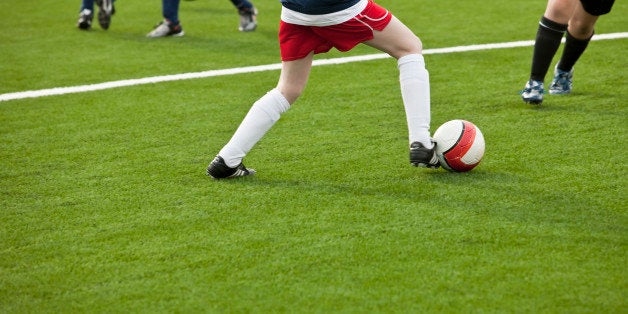
The longer my wife and I spoke, the more the tears started welling up in my 13-year-old daughter's eyes.
Sitting around an outside table at a restaurant near our home, we were sharing news our youngest child didn't want to hear: Mom and Dad were not going to let her play soccer anymore.
My wife and I had come to the belief that the risk of short and long-term brain damage from playing soccer was greater than the benefits of allowing her to continue to play the sport.
Bottom line, we believe soccer is hazardous to the human brain -- especially for girls.
Girls' soccer is second only to football in terms of the number of concussions in youth and high school sports. Most soccer concussions are the result of collisions between players, or falls in which a player's head strikes the ground.
However, we've learned it's not just concussions that soccer players, parents, and coaches need to worry about. It's the repetitive sub-concussive hits the brain absorbs during games and practices as a result of heading, the act of redirecting soccer balls with one's head, which of course houses one's brain.
Habitually heading soccer balls may have similar effects on the brain as the repetitive sub-concussive hits that offensive and defensive linemen receive banging heads along the line of scrimmage in football.
When you actually spend some time thinking about it, sticking your head in front of a hard flying orb -- one that can come at you at speeds upwards of 50mph -- doesn't make much sense.
"Long-term (brain) damage may have less to do with the number of diagnosed concussions and perhaps more to do with the number of sub-concussive impacts to the head," according to Kevin Guskiewicz, a brain researcher at the University of North Carolina.
To that point, the mound of research highlighting the dangers of soccer in general, and heading in particular, is growing larger.
A study published in the Journal of the American Medical Association by Harvard researchers compared the brains of soccer players to those of swimmers. They found changes in the white matter of soccer players' brains that weren't there in the brains of swimmers.
Another study, this one conducted at Humboldt State University in California, revealed that soccer players who headed the ball the most during a game did worse on cognitive tests after the game than their peers who hadn't headed a ball. Moreover, the players that did the most heading also suffered more often from headaches and episodes of dizziness compared to players that headed the ball less often.
Moreover, a recent study in the journal Brain found that it's total head trauma -- concussions and sub-concussive hits -- that is cause for concern. This is noteworthy because most sub-concussive hits don't result in any immediate symptoms for athletes. The damage appears to be cumulative.
"Heading a soccer ball is not an impact of magnitude that will lacerate nerve fibers in the brain," according to Dr. Michael Lipton, lead author of a study that showed that regularly heading a soccer ball can lead to brain injury. "But repetitive heading may set off a cascade of responses that can lead to degeneration of brain cells."
Dr. Robert Cantu, a neurosurgeon and co-director of the Center for the Study of Traumatic Encephalopathy (CSTE) at Boston University Medical Center, believes heading should simply be eliminated from youth soccer under the age of 14.
But it's not just young people, or girls, that should be concerned about soccer's safety. A study of retired professional Scandinavian soccer players showed memory deficits among the pro players.
As a two-sport college athlete, I certainly realize injuries are a part of sports. But brain injuries aren't like knee, ankle, shoulder, or back injuries. A person's brain is the essence of who he or she is; it's the home of one's intelligence and personality.
I believe strongly in the benefits of teams sports for children -- physical fitness, teamwork, leadership, dealing with adversity, commitment to a common cause, to name just a few. But those same benefits can be achieved playing sports other than soccer.
A few days after our dinner table conversation, our daughter began to understand and accept our decision. She will continue to play multiple sports. But soccer will no longer be one of them.
Ken Reed is Sports Policy Director for League of Fans (www.leagueoffans.org)
